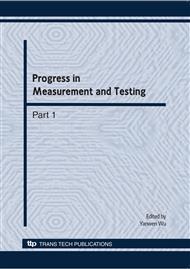p.1272
p.1278
p.1283
p.1290
p.1296
p.1302
p.1308
p.1314
p.1320
The Concave Contour Detection Based on GVFsnake
Abstract:
Active contour model is an important research field in computer vision and many researchers studied the variational method in recent years. The traditional snake model is unable to converge to the concave area and it has a lower convergence. By improving the external energy, researchers introduced a gradient vector flow active contour model (GVFsnake). Several standard images are used to segmenting experiments, and the results show that GVF has obvious advantages compared with traditional snake model in the iteration number of force field. Experiments show that the method is faster and better to converge in the concave area. The edge information can be kept well and diffused more quickly.
Info:
Periodical:
Pages:
1296-1301
Citation:
Online since:
May 2010
Authors:
Keywords:
Price:
Сopyright:
© 2010 Trans Tech Publications Ltd. All Rights Reserved
Share:
Citation:


